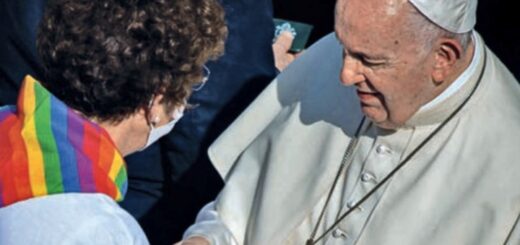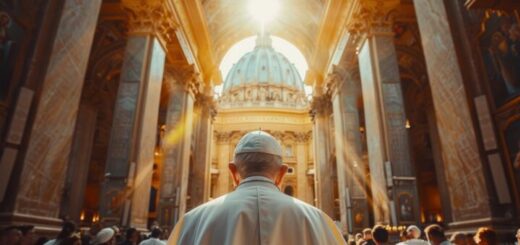The miracle of ecumenical vigils for overcoming homotransbiphobia
"I can't explain the emotion I felt seeing Catholics, Waldensians and LGBT+ Christians praying together. It was as if God was telling us that his love is greater than our divisions." (Florence Vigil, 2007, a participant of the Kairos group)
The ecumenical vigils for overcoming homotransbiphobia, which began in 2007, represent a symbol of welcome and unity. Born from the pain of a tragic suicide, these celebrations are today an opportunity to reflect on the value of Christian love and overcoming discrimination.
Thanks to the commitment of LGBT+ Christian groups and the collaboration between Christian communities of different denominations, these vigils have transformed pain into hope.
2007: The birth of the vigils in Florence
The first ecumenical vigil was held in Florence in 2007, thanks to the determination of Pastor Gianna Sciclone, the first female pastor of the Waldensian Church, and the Christian LGBT+ group Kairos.
This initiative was a concrete response to the tragedy of the suicide of a young man in Turin, an event that profoundly shook the community.
The prayer vigil for overcoming violence linked to homotransbiphobia saw the participation of Catholics and evangelicals, marking the beginning of a journey of dialogue and common prayer on these issues
One participant recalls: “Praying together, Catholics and evangelicals, was a miracle. We felt that God was calling us to build bridges and not walls."
The Palermo vigil: a crucial passage
In 2010, in Palermo, an attempt was made to organize a vigil to overcome homophobia within a Catholic parish. However, the local Curia, led by Archbishop Paolo Romeo, denied permission to host it in the parish, forcing the organizers to hold the event outside the church, in the square in front. This episode generated significant outcry and sparked a public debate on the Catholic Church's resistance to welcoming inclusion initiatives.
The outcry caused by the failure to host the vigil mobilized many Catholic organizations and groups of faithful. The debate did not remain limited to Palermo, but spread nationwide, highlighting a growing sensitivity on the topic.
The following year, in 2011, many Catholic parishes decided to open their doors to host ecumenical vigils for overcoming homotransbiphobia. Furthermore, since then, some bishops began to participate directly, presiding over these celebrations, as a sign of a concrete and tangible openness towards the themes of welcome and equality.
Testimony is the heart of the vigils
The vigils for overcoming homotransbiphobia have always been enriched by the voices of those who have experienced the pain of discrimination. In 2014, Marco P., attending a vigil in Rome, shared his experience:
"I have not suffered physical violence, but words hurt. Praying together with those who suffered more than me was an act of healing” (Vigil of Rome, 2014).
The path opened by the ecumenical vigils demonstrates that, even in contexts of initial closure, sensitivity and discussion can lead to significant changes.
In recent years, in addition to the traditional vigils, the Sunday services for overcoming homotransbiphobia, a further innovation that underlines the growing awareness and commitment of Christian communities.
Since 2007, these vigils have demonstrated that dialogue, even when difficult, is the only possible path to overcoming barriers and prejudices.
Even today, the ecumenical vigils for overcoming homotransbiphobia represent a moment of prayer and shared reflection, in which Catholics, Waldensians, Methodists and other evangelical churches join groups of LGBT+ Christians to testify that "God does not show preference for people" (Acts 10,34-35).






